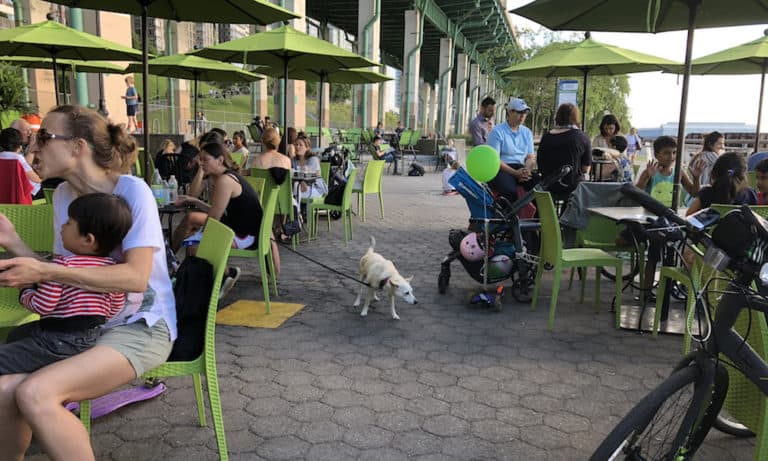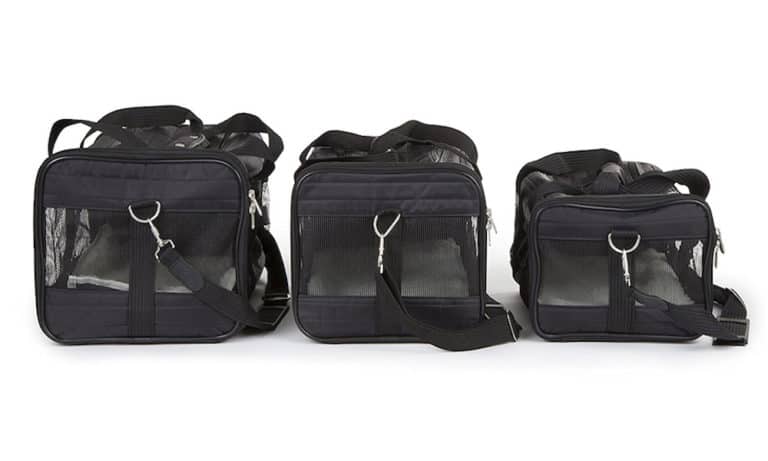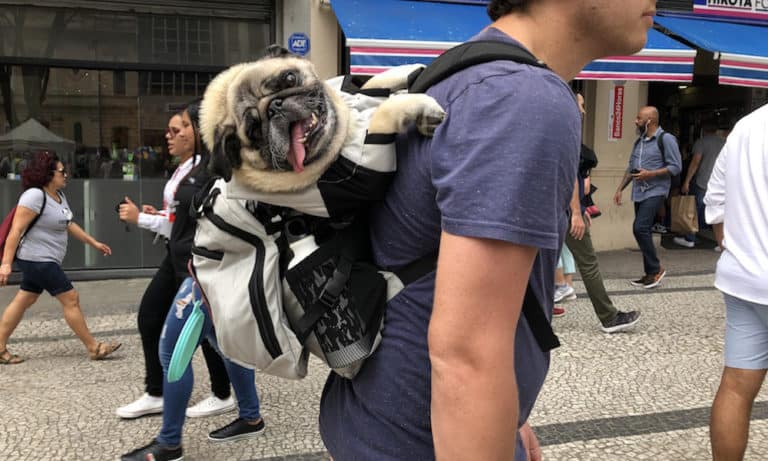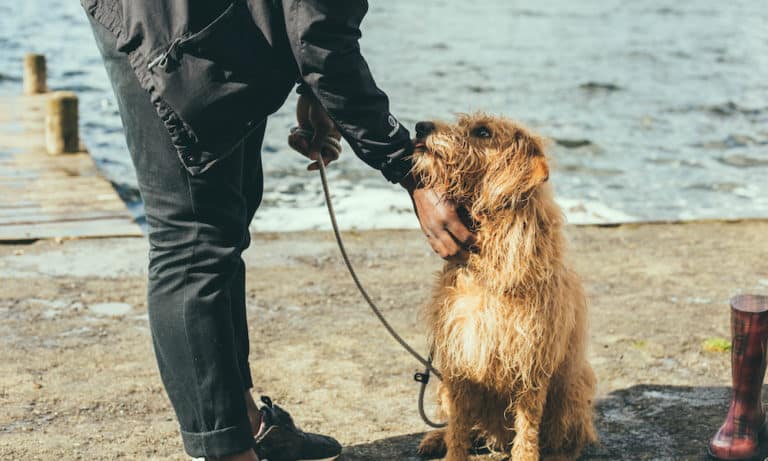How to Adopt a Pug
In 2012 we were ready to adopt a dog. We had just returned to New York City after living in Brazil for a year and a half. We had a cat named Kitty who we had found as a stray on the streets of Rio de Janeiro. Kitty was a year old, and we wanted to raise him with a canine friend. We knew we wanted to adopt, and we had a few specifications in mind.
- We wanted a small dog, since we lived in a small apartment and traveled often.
- We didn’t want a puppy, since they’re a lot of work, require training and can grow bigger than expected.
- We were open to any breed, but I was especially interested in Pugs, Chihuahuas and Pomeranians.
After a lot of research, a few false alarms, and plenty of patience, we adopted Boogie from a rescue in Brooklyn. He was one year old, on the chubby side and everything I’d ever dreamed of. After adopting Boogie, we went on to foster over 12 dogs, many of them pugs, before adding another permanent addition (Marcelo!) to the family.
Adopting a pug, and working on multiple pug adoptions as both a foster parent and pug rescue volunteer, made me privy to the world of pug adoption. Here are some tips on how to navigate the experience and adopt your own pug.
Related: A Complete List Of Pug Rescues In The USA
Learn About Pugs
If you’re a former or current pug owner, then congrats, you’re already well acquainted with the pug life and can skip this step. If you’ve never had a pug, then it’s a good idea to learn a bit about them before becoming a new pug parent.
Are pugs right for you and your family? Will they fit your lifestyle?
Find out if the breed is a good match for you. While most pug owners will say the breed is perfect, the truth is they can be stubborn, and they shed a lot. They’re also prone to certain health issues.
You can learn more about pugs here and here to see if you’re cut out for the pug life.
Find Rescues Near You
There are approximately 40 pug rescues across the United States. You can see a complete list of them here.
Look for rescues that adopt out to your state. Note that each rescue services a different area. For example, Pug Rescue of New England (PRoNE) adopts out pugs to six states (Maine, Vermont, New Hampshire, Massachusetts, Rhode Island and Connecticut), and they give special consideration to pug lovers in other neighboring states.
Pug Nation, however, a rescue located in Los Angeles, adopts out to all of the United States and Canada. As long as you are willing to drive the pug home or arrange to fly with your pug in the cabin, you can adopt. Each rescue is different, so be sure to check!
Do Your Research
Before agreeing to work with a rescue, read their reviews, their policies and check their 501(c)3 status. You can do a search for their records here. The adoption process can be long and involved. Make sure that the people you’re working with are legit.
Ask These Questions
Before settling on a rescue, ask a few questions first. You want to ensure that you’re well informed before you begin what could be a lengthy process. Ask the following questions before adopting a pug:
- Is there a fee to submit an application?
- Does the rescue adopt out to your city and/or state?
- What is the adoption fee?
- Is the application open or do you have to apply for a specific dog?
- Are you allowed to meet available dogs before adopting?
Keep Your Options Open
Don’t limit yourself to pug rescues. We adopted Boogie from a regular dog rescue in Brooklyn that takes in canines of all shapes and sizes. I saw them post a photo of Boogie on their Facebook page and immediately submitted an application.
If there are local rescues you like, I recommend following them on social media to see if a pug pops up. You can also use Petfinder.com to locate pugs in your area. You never know!
Get Your Applications In Early
Some rescues only allow applications for a specific pug, while others allow you to submit an application at any time. If your rescue of choice does the latter, get your adoption application in ASAP.
The sooner, the better, because rescues need time to review applications. There are reference checks, vet checks and home visits, all of which take time. If you get your application in early and are approved, you can act quickly when the pug of your dreams becomes available. It will give you an advantage.
That said, rescues do their best to match the adopter to the pug. A pug’s needs come first, no matter how much you have fallen in love with a photo. If you don’t get a particular pug, it’s probably because another adopter was a better fit for that pug. But be patient – the right pug will find you!
Have Patience
Adopting can take anywhere from a few weeks to years. It’s not always a quick process, especially if you have a particular kind of pug in mind. Puppies are the hardest to adopt, and it can be tougher to find pugs in colors other than fawn, like black, white or apricot. Senior pugs are by far the most available in the world of pug rescue. Keep all of this in mind when you begin your search.
Besides pug preferences, adoption can also take awhile because rescues are run by volunteers. These are people who dedicate their free time to helping pugs in need. Your application might not be processed right away, and you might not get an email or message back for a few days. Have patience – and thank volunteers for devoting their time and energy to rescue. It’s not an easy job!
Prepare Your Home
Many rescues will either ask for a virtual tour of your home (photos or Skype tour) or require a home visit. This is to ensure that you’re able to provide a safe environment for a pug to live in. Be prepared for this, and make sure you puppy proof your home. Here are some tips and things to consider:
- Organize and hide any visible or reachable wires or cords so they’re not accessible to a dog.
- Relocate chemicals and cleaners onto high shelves.
- Think about where your dog will sleep: in bed with you? In a crate? In a dog bed? Make sure there is adequate room.
Choose References
Many applications require a few references. These are the people in your life who can vouch for you and confirm that you’ll be a good pet owner. References are typically contacted by phone or email, and asked questions like:
- How long have you known XXX?
- Do you know if XXX has ever given a pet away, and if so, why?
- Does XXX have other pets, and what can you share about them as a pet owner?
Be sure that you choose references who are close to you, and who are happy to share information and anecdotes about you. Warn your references that they are going to be contacted, and make sure they are available.
Expect Vet Checks
If you currently have a pet, it’s likely that the rescue you’re applying to will ask for your current vet information. This is to ensure that you take proper care of your current animal, and that they are up to date with vaccines and health check ups. Be sure that your current animals are healthy and cared for before adding another to the family!
Click here for more pug stuff.
Pin for later!










My wife and I are looking to adopt a female Pug around 3 years of age . We have had 2 pugs on the last 20 years and we need a Pug to round off our family.
Thanks
Jeff 631-831/0750
Looking for a 3 year old girl. Live in White Plains NY.
Have had 2 pugs in the last 20 years.
Thanks
looking for Pug how need a family because I love animal there need someone to love them and need aw home .
Interested
We’ve lost 2 pugs,both 17 yrs old.We have one remaining -age 15 and he’s lonesome.
How old are these dogs
My forever home awaits a Pug..Have been looking for 2years..An elder Pug, or any age would be wonderful. thank you.
Check out our post on pug rescues in the United States and find one near you to apply.